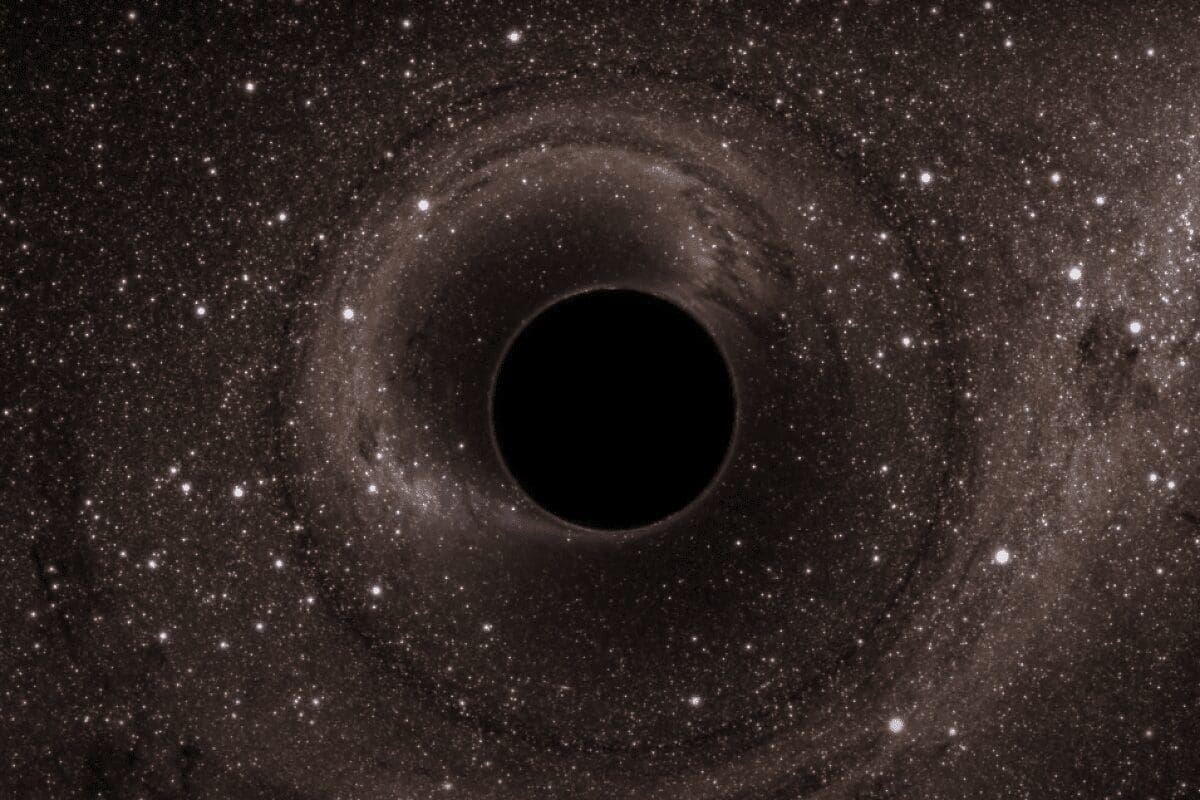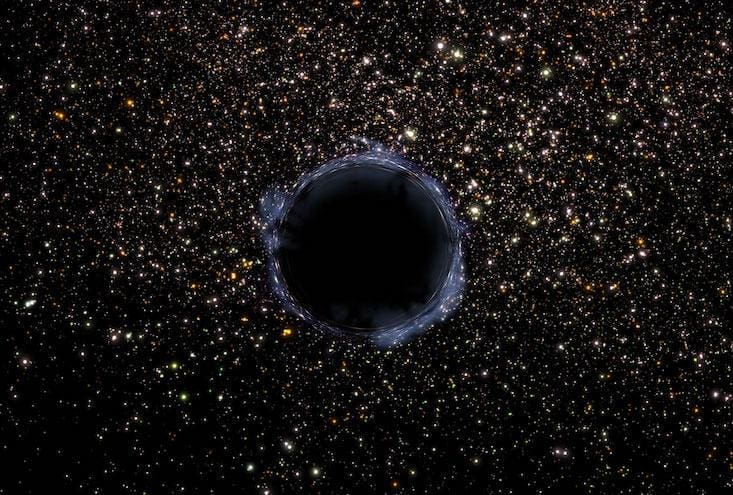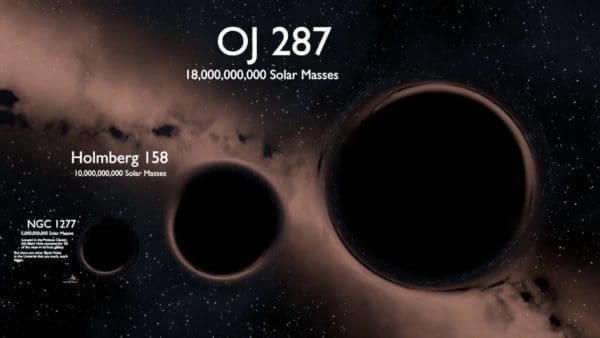
Astronomy is undoubtedly a subject of great fascination. From stars of different colors to the bizarre planets orbiting them; from millions of galaxies different from our own to the constellations of the night sky; whatever lies beyond earth’s atmosphere often instills a feeling of awe and wonder in us. And thanks to astrophysicists and the ever-advancing technology facilitating the study of outer space, we can peek into what’s beyond our space, into the history after the big bang.
Research in physics gives us predictions about the existence of objects beyond our conceptual understanding. From the neverland of quantum physics at the microscale to supermassive structures of outer space, the intellect of mankind has undoubtedly discovered fancy things our ancestors wouldn’t even have dared to think of. One such supermassive structure from outer space is the well-known “Black Hole”.

Ah-ha! Before you start assuming the cliches about a black hole, about it being so dense that not even light can escape from it, we are going to delve into the history of its discovery, where did it get its name from (Origin lies in India), and finally learn a thing in contradiction to our pre-existing notion of a black hole- they too, emit light! So, let’s jump right into it.
Before Einstein
As folklore goes, it was Einstein who predicted the existence of black holes through his theory. However, it was long before Einstein put forth his General Theory of Relativity, the existence of such an object from which even light cannot escape was proposed by an English man named John Michell in the late 18th century. Scientists of his time were fascinated just like us by this concept, but later the discovery of the wave nature of light brought with it a disappointment. Why? As per Newton, particulate objects experience the force of gravity, but since the light was established as a wave phenomenon, it really put everyone questioning, can light, which is, in fact, a wave and not a particle be affected by gravity? Thanks to the father of modern physics, we now know the answer. Yes. Gravity can affect the motion of light.
Prediction of the Bizarre
It was in November 1915, Einstein presented his “field equations” which constitute his now known General Theory of Relativity; these equations defined how the existence of matter and radiation affected space-time. This was a big blow in the scientific community, wherein up until then gravity was considered merely a force. His theory confirmed that light can be affected by the presence of highly concentrated mass under the influence of “gravity”. Later extensive work into finding a solution of these equations for a point mass object and the resultant gravitational field gave bizarre results wherein, as physicists would call it a ‘region in space-time where the math broke’. Properties of such an entity became a subject of curiosity and culmination of works by renowned physicists such as Karl Schwarzschild, Subrahmanyam Chandrasekhar, David Finkelstein, Roger Penrose, and Stephen Hawking resulted in the definition of an outlandish object of the cosmos we are part of which later went on to be commonly known as the ‘Black Hole’.
Why Black Hole?

While John Michell called it ‘Dark Star’, physicists of the late 20th century conventionally named it “gravitationally collapsed object”. It was Robert H. Dicke, who first coined the term “Black-Hole”, comparing this phenomenon to the black hole of Kolkata, which was a prison known for its notoriety, out of which prisoners never came back alive. However, later on, John Wheeler, an American Theoretical physicist adopted the term for its conciseness and “advertising value” which lead to some crediting him for coining the term.
How do they actually form?
A typical star in its lifetime, converts hydrogen to helium, helium to beryllium, and continues to produce further ‘heavy’ elements through a process called nuclear fusion, which is also responsible for the release of huge amounts of energy a star is characterized for. This chain reaction within a star stops when elements fuse to form iron. Iron is a heavy metal, that makes the core of a star super dense. If the star is massive enough (stars having mass more than thrice the mass of the sun), it ‘collapses’ under its own gravity to form a black hole. To collapse is to literally compress all of the star’s matter into a single point in space. This point, as called by the physicists, is singularity.
So, why do these point masses appear so big?
Although the matter of a black hole is all packed into a single point, they ‘appear’ to be big because of the effect the singularity has on its surrounding space. The radius of a black hole, conventionally known as the Schwarzschild radius by scientists, is the distance from the center, at which the escape velocity becomes equal to the speed of light. In simple words, this radius is simply the radius of darkness we would typically observe while looking at a black hole. The boundary, which separates it from the rest of the universe, is known as the event horizon. Beyond this boundary, any events that occur within the Schwarzschild radius will forever remain a mystery. No information of any sort can be retained back out of the event horizon.
So, are black holes giant vacuum cleaners in space?

Contrary to common beliefs, black holes don’t go horsing around sucking up the matter in the universe. There’s no special force a blackhole exerts that any other celestial body doesn’t. At the end of the day, it’s all gravity. Yes, the black holes are super dense, but only the matter that crosses the event horizon is sucked up into the black to the point of no return. To give you a hint, if the sun were to be replaced by a black hole of the same mass as that of the sun, nothing from our solar system would collapse into it. Our earth will orbit around the black hole, just like it does now. (Except for the fact, we all would have frozen to death, since, our only source of energy would cease to exist)
What sizes do black holes come in?
It’s quite astonishing to know that, scientists have predicted that some black holes could be as small as an atom, but they could hold a mass equivalent to that of a mountain. The conventionally known black holes can be classified into stellar and supermassive black holes. Stellar black holes can have masses more than 20 times that of the sun.

There could be many such stellar black holes throughout our galaxy. Supermassive ones, as the name suggests, could have masses more than one million times that of our sun! The black hole at the center of our galaxy- Sagittarius A* has a mass equivalent to about 4 million suns. The largest known black hole to mankind, TON 618, lying about 10 billion light-years away from earth has a mass equivalent to 66 billion solar masses (66 billion times the mass of our sun) and is 779.6 billion kilometers in diameter!
Black Holes aren’t so black
Black holes emit radiation too! How contradictory it may sound, but thanks to Dr. Stephen Hawking we now know, black holes emit radiation, which is named after Hawking himself, ‘Hawking Radiation’. To put forth the idea, as Stephen himself explains- Space, as we imagine, is not so empty. Quantum physics predicts the occurrence of antiparticles. There are fluctuations constantly happening in the fabric of spacetime which result in the spontaneous formation of virtual particles. These form in pairs (particle and antiparticle), and cancel out instantly.
In simple words, particles are appearing out of nowhere in all of the universes and instantaneously disappearing by annihilating each other. Let’s consider the same phenomenon near a black hole’s event horizon where these virtual particles appear. Due to the massive difference in the gravitational pull through space, one particle may get pulled into it, while the other may escape. This escaped particle is what appears as Hawking radiation, while the particle which collapses into the black hole will “borrows energy from the singularity and result in the reduction of its mass”. Why so? Because physics won’t permit violation of conservation of mass, hence there must be loss of energy from the black hole. This results in radiation that seems to be coming from the black hole and also a reduction in the size of it, which perfectly imitates the actual radiation of any celestial body.
This theory further predicts the death of a black hole. Yes! Death of a dead star- slowly and steadily through Hawking Radiation across vast spans of time, However, this process is slow beyond one’s imagination. For example, a simple black hole, roughly the size of our sun would take 10 ki64 years to evaporate completely! Which is way too longer than even the age of our universe.
If black holes are dark objects, how do scientists find them?
Simple, observe the movement of celestial objects in space. Black holes have a strong gravity, which affects the motion of other massive bodies in their vicinity. Detection of blackholes through such observations is an extensive process and requires a lot of data. Supermassive black holes have a characteristic ring of dust and gas particles spinning around their equator. The dust is the remains of close-by stars and matter, which got devoured by the massive pull. Due to the high-velocity spin of the black hole, these particles revolve along with it, at high-speed resulting in friction, producing heat, and radiation. This glowing ring of gas and dust makes these bizarre objects spectacularly visible.
Did Christopher Nolan show it right?

Yes, time slows down near a black hole. Thanks to the General Theory of Relativity, we know that these celestial bodies bend the fabric of space as well as time, this results in time being passed slowly as you approach closer to a black hole. If you were to go near the event horizon (ignoring the fact that you might get stretched into spaghetti and pulled right into the hole), your friends on earth will find you to be paused, frozen in time, while for you, you will see the future of the universe manifest before you, while your clock would appear perfectly fine to you. Paradoxical it may sound, but it agrees with Math.
But we might never know, what exactly is inside an event horizon? What does a singularity look like? Would we travel into time just like in Interstellar? Are black holes a portal to another world? To know what’s inside will remain a mystery until the intellect of mankind cracks through the event horizon too!
About the Author: Dhiviyansh Punamiya is a first-year student at Manipal Institute of Technology.

Be the first to comment